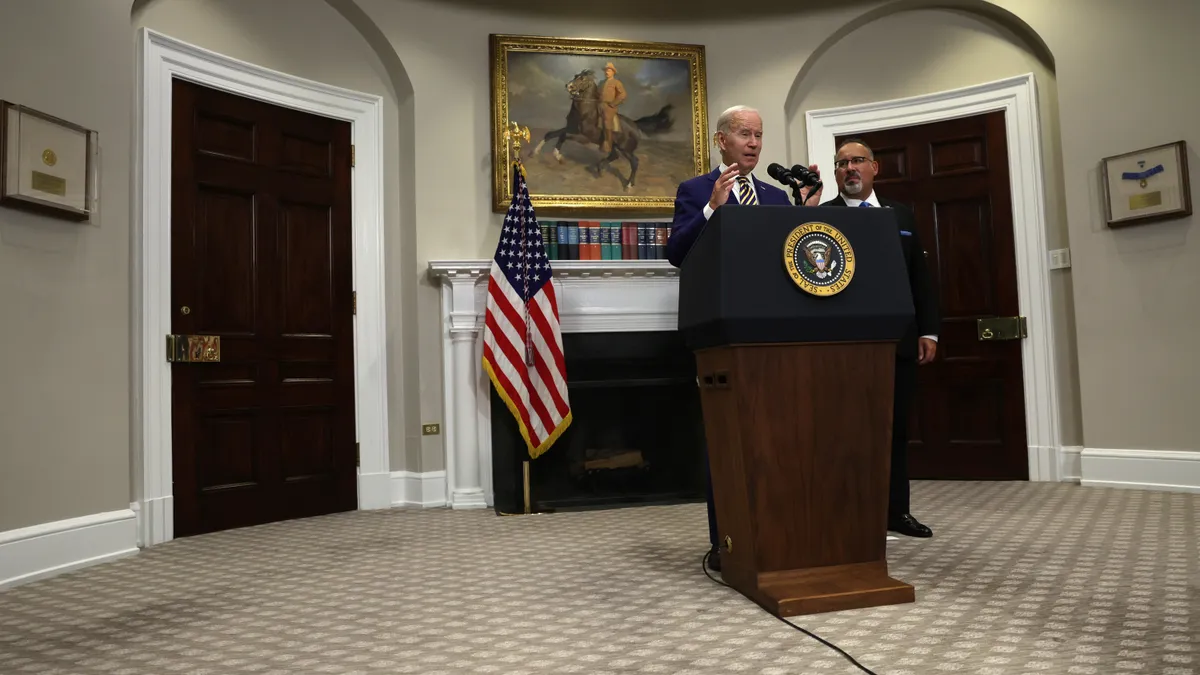It's easy to get lost in the rhetoric as Democrats and Republicans try to use President Joe Biden's student debt forgiveness program to score political points against each other.
One of the biggest arguments over the plan, which Biden announced last week, is whether it's a handout to high earners who don't need it or relief for low-income families that would otherwise be unable to repay their student debt. That's a conversation that cuts to the heart of a key concern for higher ed leaders: college's value proposition for different groups of students.
It's also a matter of context. The income caps in Biden's plan — $125,000 per year for individuals and $250,000 for married couples filing taxes jointly — look very different for someone in a high-cost area like San Francisco or Washington, D.C., than they do in a part of the country where housing and other essentials are less expensive but incomes are lower.
Still, estimates can help us understand which earners stand to benefit the most.
The Penn Wharton Budget Model, a research organization at the University of Pennsylvania, released estimates Friday showing Biden's debt cancellation plan will cost the government between $469 billion and $519 billion over 10 years.
We covered those estimates, as well as the group's attempts to quantify how much other federal student loan changes Biden announced will cost over a decade.
Now we're adding more detail by taking a look at the group’s figures on which earners will benefit the most from the loan forgiveness plan. Below are three charts breaking down which income brackets, exactly, are likely to get the bulk of the relief in 2022.
First, we look at debt forgiveness benefits going to earners divided across five equal population groups, or quintiles. The middle earnings quintile gets the largest share of the benefits, just over 36%. The top earnings quintile would receive the smallest share, just shy of 6%.
But quintiles aren't particularly helpful if we're trying to understand people's income in dollar amounts. The following chart shows benefits flowing to the five quintiles, noting the dollar ranges each group earns.
It shows the middle income band set to receive the most forgiveness is made up of those earning $50,796 to $82,400 per year.
Finally, the data breaks down the top earnings quintile to show estimated benefits flowing to specific slices of high earners. As can be expected given the program's income caps, most forgiveness is set to go to those high earners who take home the least in pay — those making $141,097 to $212,209.
The charts above show estimates covering borrowers of all ages. The researchers also released estimates covering just those ages 25-35, or those most likely to have recently graduated from college. Looking just at younger borrowers shifts the distributions down, meaning lower earners will receive a slightly larger share of the benefits. The difference was within a few percentage points of the data pictured above, though.














